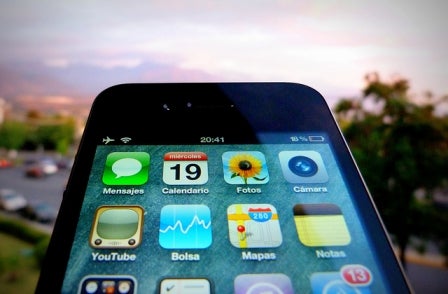
This is the second part of a post which offers some initial thoughts on five questions posed by a student researching the impact of smartphones (specifically the Apple iPhone) on the business and cosumption of news.
You can see questions one to three here. And here are some thoughts on questions four and five:
4. How has the newswriting changed since the first iPhone? (i.e. shorter, punchier, use of images, headlines etc.)
Not much. The internet itself made people rethink news. Some of this was about making things shorter and punchier (the body of the story, for example) but, paradoxically, some things have got longer. Most notably headlines. No longer restricted by the column inches of print, headlines got flabby. First they got flabby for no purpose and then they got long because search engines rewarded those that were keyword-heavy (see MailOnline).
But has the iPhone informed how we write news? I’m not sure it has.
5. We are available, and everything is available to us, at all times. Has this changed how many times people read news each day to keep updated?
The period of the commercial internet dating back to the mid-1990s has coincided with a decline in newspaper sales here and elsewhere, something that has only accelerated in the last decade. So in that respect, the technology has changed the way consumers get news. Fewer people are reading newspapers.
But remember most people don’t have an iPhone and there’s no guarantee that those that do have a smartphone use it to get their news. So it’s important not to overstate its impact – broadcast news remains massively influential (combine the viewing figures for ITV News at 6, News at 10 and BBC’s 10 O’clock News and see what number you come to) while over 8 million national newspapers are still sold each weekday, and read by many more.
Nevertheless, it is true to say that more people are reading more news via the internet today than they were five years ago. And smart devices are impacting both the volume and consumption patterns. In short, reading habits via smart devices are not the same as reading habits on the PC and desktop.
As I’ve noted before, these smart devices – the iPhone included – have extended the web day and made it more likely that people will access news websites on Saturdays and Sundays.
To understand the change, these two charts are a good place to start. First, there’s this graph from the Guardian which illustrates how readers consume what the Guardian produces via various means across the working day (from midnight to midnight.):
.png)
The light blue (m.guardian), orange (mobile apps) and green (tablet (web)) are the most interesting for our purposes as they are indicative of consumption patterns on mobile platforms, both smartphones and tablets. In every instance, activity is lower from 9am to 4pm compared to access via desktop computers (the red line) but either side of the working day, activity is greater. Here people are consuming news on their commute, on their sofa, at the kitchen table and in bed. It’s not replacement activity. It’s supplementary consumption.
The second graph comes from the FT where the blue line is web access from the desktop (PC) and the salmon pink is mobile (smartphone and tablet). Here you see two trends:

First there are two mobile peaks during the week day – first early in the morning, the second in the evening. These are, in part at least, people ‘checking in’ and ‘checking out’ either end of the working day. The FT subscriber reads the title for work, so this makes sense and may not necessarily apply to other news providers.
The second trend illustrated on this graph almost certainly does apply more widely – namely the peaks of traffic at weekends. Saturdays and Sundays are notoriously quiet for most news and current affairs websites (certainly compared to weekdays) but mobile access is filling in those troughs to quite a dramatic effect.
You can read part one of this blog post here.
Email pged@pressgazette.co.uk to point out mistakes, provide story tips or send in a letter for publication on our "Letters Page" blog







